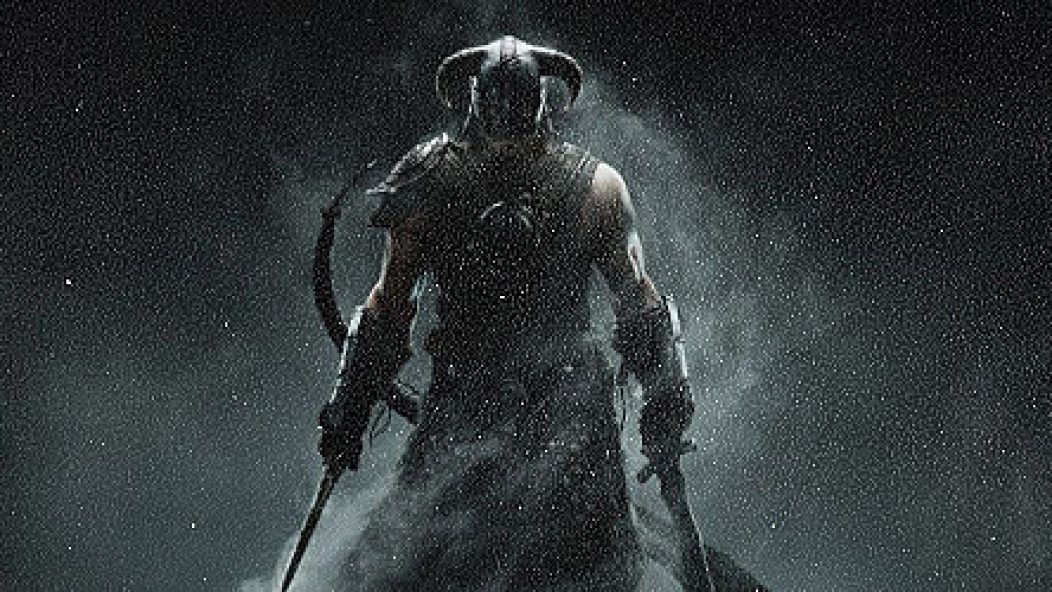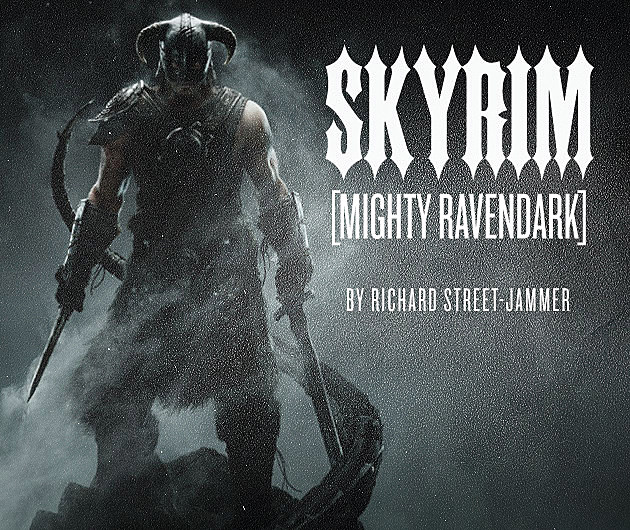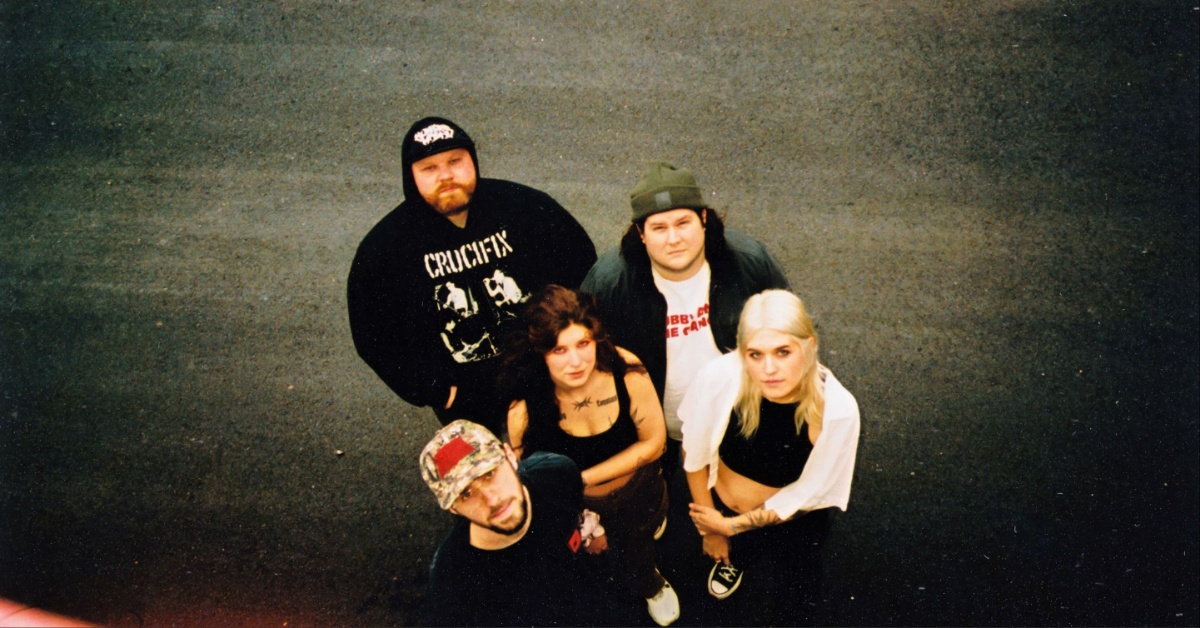
Skyrim (Mighty Ravendark)

Bethesda Softworks’ video game The Elder Scrolls V: Skyrim has been a massive hit, garnering an abundance of both sales and critical acclaim. The Elder Scrolls games are marvelous at drawing players into their high fantasy worlds. Part of their ability to achieve player immersion is their soundtracks, which utilize vaguely medieval sounding pieces that fit the Medieval/Renaissance environments. Gamers in general are enjoying Skyrim, and I suspect that quite a few metalheads are also gamers.
While I enjoy the game’s soundtrack well enough, I inevitably find myself bored with it and replace it with heavy metal. To maintain the sense of immersion, I find myself leaning toward certain bands and albums. Metsatöll works well, as does Skyforger’s Kurbads and Rotting Christ’s Aeolo. Musically and lyrically, Amon Amarth is even better than the aforementioned bands, but Immortal tops them all.
I think of Immortal’s discography as Skyrim’s unofficial soundtrack. Why Immortal? Their lyrics create a fictional world and use descriptions of that world to help communicate their vision of black metal. Their band pictures and music videos atop mountains are a visual link to that fantasy world. Immortal’s fantasy world is called Blashyrkh, Mighty Ravendark, and the resemblances between Skryim and Blashyrkh are uncanny.
Skyrim’s terrain is mountainous, rugged, and harsh. At night or when in the high mountains, everything is covered in snow and ice. Strong winds are common. The wildlife and architecture is suited to the northern clime, and the game’s overall setting is simultaneously grim and majestic. Skyrim’s native people are called Nords, and their lifestyle, culture, and appearance is based on pre-Christian Scandinavia. Skyrim is about a religious civil war between the Nords and also a war of liberation in which the Nords try to throw off the yoke of an empire that views Skryim as a rebellious province.
Immortal’s “A Sign for the Norse Hordes to Ride” captures both the game’s themes of war and the Nord’s love of battle:
Watching silently with a warrior’s eye
Winds of destruction fill our hearts with joy,
Portals to war lay before us
Fog in the distance is all I see
Born of the blackening sky of Blashyrkh
A ravens’ claws lifted towards the sky
It’s a sign for the Norse hordes to ride
A sign for the Norse hordes to ride
And the way for our enemies to die.
Skyrim is a grim, cold, majestic kingdom, much like Blashyrkh, as described in “At the Heart of Winter”:
Blashyrkh, mighty be your name, victorious a kingdom we made
With strength and pride all the way you are at the heart of winter
As the face of a glacier, your mountains tower against the sunset
Unforgetting what was made a bond so strong and ever so real . . .
The statue watches the kingdom, your giant wings make all beneath
I’m staring from the Raventhrone, I know I’m at the heart of winter . . .
There are many other lines in Immortal’s lyrics that resemble Skyrim’s dragons, draugr, necromancers, other forms of evil, and the land itself. Listing and explaining how all the lyrics fit Skyrim and vice versa would take thousands of words.
Bethesda didn’t mean to do it, but they created a visual representation of Blashyrkh. In the process, they provided visuals for Immortal’s music. Scoff all you want, but hey, where I live, it’s neither snowy nor mountainous enough for stereotypical black metal visuals. Baltimore and Washington D.C. have gridlock, urban decay, filthy streets, and filthier politicians that might match Ludicra but have nothing to do with most black metal.
Part of what makes the Immortal/Skryim connection so interesting is the degree to which the music, lyrics, themes, and visuals match. The other part of the connection that is so intriguing is that it’s a black metal band that matches a high fantasy world rather than a power metal band. No matter how many posts I write about serious power metal, that genre is indelibly linked with high fantasy concepts and themes.
I doubt that Immortal and Blashyrkh influenced whomever came up with the concept of Skyrim and its geography and history. Skyrim dates back to the mid-’90s but was more concept than fleshed out world until 2008 or so when game development began. However, it is possible that Immortal and Blashyrkh did inspire the Skyrim development teams. One of the game’s quests involves objects, characters and bits of plot that are references to Katatonia and that band’s discography, so somebody at Bethesda was aware of non-mainstream metal.
Blashyrkh-Skryim comparisons aside, the Katatonia reference is a rare example of video games and heavy metal coming together. Brütal Legend is the most obvious hookup. Everything about the game was based around metal: genre luminaries voicing characters, villains named after hair metal bands, and so on. Tim Schafer, the game’s director, is an avowed metalhead and was responsible for the game’s storyline and soundtrack. Brütal Legend was heavy metal come to life as a video game.
Brütal Legend is probably the first game to be inspired by metal to any noticeable degree, but it’s got company. Right now indiegames.com is selling a JRPG style game named Avantasia. The developer notes state that the game’s story was inspired by the two Avantasia albums. The storyline is apparently the strongest link between game and music: the main character is an Inquisitor whose faith in the Church is shaken when he’s asked to persecute his sister.
I know that John Cobbett wrote and performed some songs for The Sims, but I’m not aware of any other video game and metal hookups or references. Have I missed any? I’d like to see more such hookups in the future. Operation Mindcrime‘s storyline could be adapted for a video game. Think about some of Dan Seagrave’s album covers: Clandestine, Gateways to Annihilation, Diminishing Between Worlds. I find them fascinating, and I’d like to see what horrors and wonders hide in those twisted tableaus. The Emperor’s Return EP and Open the Gates depict situations found in a fantasy setting, and I’d love to learn more about what’s happening in them.
I don’t find the accompanying music bizarre or abstract enough to match the album covers mentioned above. When I read, I prefer no visual accompaniment, because I want my mind to use the words to paint what is happening in a story. Album covers and other visual art show a degree of detail that is impossible to achieve in writing, and so video games and film are the only ways I can think of to explore album covers further. Metal has drawn inspiration from so many sources over the years. Starting with video games, I think it would be neat for other forms of media to start drawing inspiration from heavy metal.
What do you listen to when you play video games, and what do you listen to while playing Skyrim? Does the genre and game combination matter? Do you listen to Nocturnus when you play Mass Effect? Cannibal Corpse and Dead Space? Or maybe it’s something contradictory like funeral doom and Gran Turismo. Let me know in the comments!
. . .










